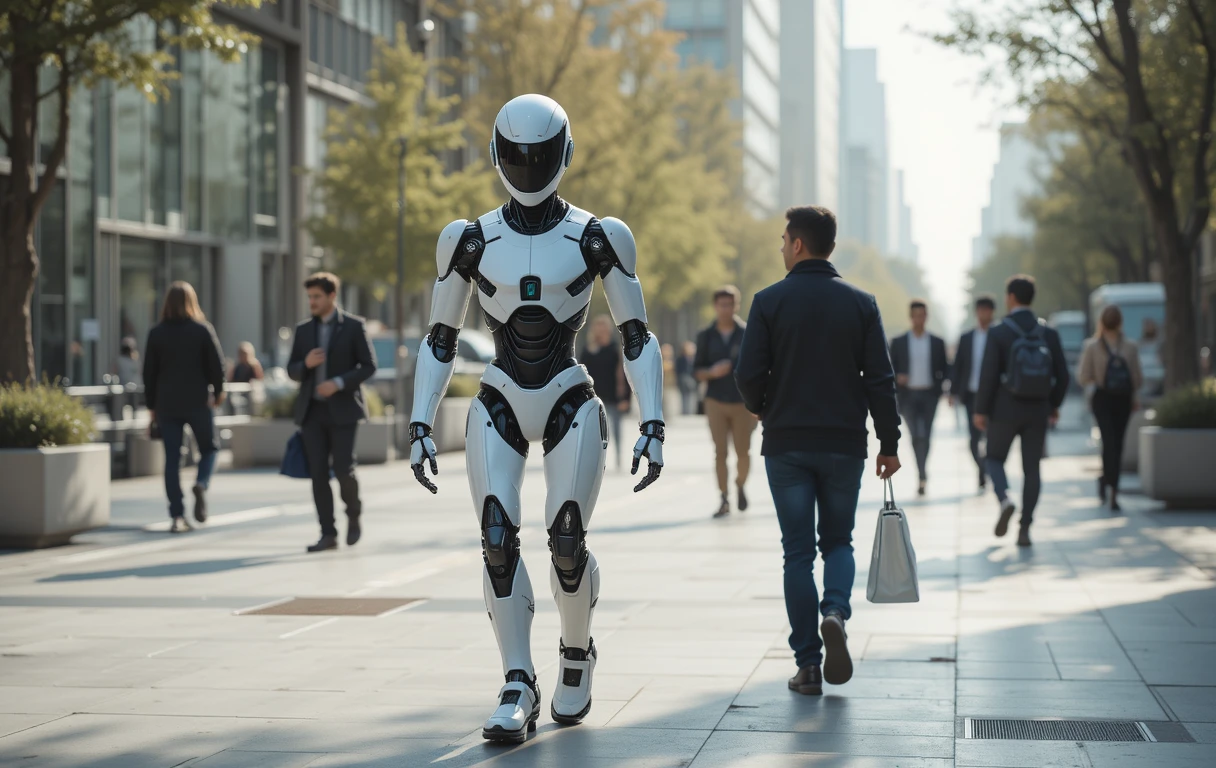Humanoid robots are no longer just the stuff of science fiction. Over the last decade, these robots have transitioned from being experimental novelties to fully functional machines capable of interacting with humans in ways we once thought impossible. But as they advance, the question lingers—will humanoid robots soon walk among us, blending into our society and becoming part of our daily lives? This article dives deep into the transformative rise of humanoid robots, their potential impact on humanity, and the challenges they present.
What Are Humanoid Robots?
Humanoid robots are robots designed to replicate human form and functionality. With lifelike appearances, they mimic human movements, gestures, and even facial expressions, making interactions more natural and intuitive. Powered by artificial intelligence (AI), these robots are capable of understanding language, recognizing emotions, and learning over time.
Famous examples like Sophia, the humanoid robot developed by Hanson Robotics, have already made waves worldwide. Sophia’s ability to engage in conversations and her “citizenship” status in Saudi Arabia showcase how close we are to integrating these robots into society.
Why Are Humanoid Robots on the Rise?
The rise of humanoid robots can be attributed to advancements in AI, machine learning, and robotics engineering. Innovations in these fields have enabled developers to build robots that don’t just resemble humans but also think and act like them.
Key Drivers of Their Development:
- Healthcare Needs: Robots like TERA and Robear are already assisting in hospitals by providing care to elderly and disabled individuals.
- Labor Shortages: Industries are turning to humanoid robots to fill workforce gaps, especially in sectors like hospitality, manufacturing, and retail.
- Emotional Connectivity: By resembling humans, these robots create a sense of trust and relatability, crucial for caregiving, education, and customer service.
The combination of these factors has created a fertile ground for the rapid development of humanoid robots.
Humanoid Robots in Everyday Life
Imagine walking into a restaurant where your waiter is a humanoid robot. Picture a humanoid nurse assisting doctors in critical surgeries or even an AI-powered teacher guiding your child through complex lessons. These scenarios are becoming less futuristic and more of a near-future reality.
Some existing use cases include:
- Customer Service Robots: Companies like SoftBank Robotics have created robots like Pepper, designed to provide customer support and boost engagement in retail and hospitality settings.
- Caregiving Robots: Japan, facing an aging population, is leading the way with caregiving robots that assist the elderly with daily tasks.
- Education and Training: Humanoid robots are also being used in classrooms and corporate training to make learning more interactive.
The Ethical Debate: Should Robots Replace Humans?
As humanoid robots become more advanced, a critical question emerges: Should robots replace humans in certain roles? This is a topic of heated debate.
On one hand, these robots could take on jobs that are dangerous, repetitive, or physically demanding, enhancing workplace safety and efficiency. However, on the other hand, critics argue that widespread adoption of humanoid robots could lead to significant job displacement, further widening the gap between technological progress and societal well-being.
Moreover, concerns around privacy, security, and ethics are growing. Could humanoid robots eventually gain too much autonomy? Will they blur the line between human and machine relationships? These are questions that humanity must address as the technology matures.
The Challenges of Humanoid Robots
Despite their potential, the rise of humanoid robots isn’t without challenges:
- Cost: Developing and deploying humanoid robots is incredibly expensive, limiting accessibility for smaller businesses and organizations.
- Technical Limitations: While humanoid robots are advancing, they are far from perfect. Many struggle with fluid human-like movements, facial expressions, and emotional understanding.
- Ethical and Legal Issues: The concept of granting rights, citizenship, or autonomy to robots raises significant ethical questions. How do we draw boundaries between human and machine?
These hurdles highlight the complexity of integrating humanoid robots into society on a large scale.
Are We Ready for Humanoid Robots to Walk Among Us?
This is the million-dollar question. While humanoid robots are technically advanced and capable of performing many human-like tasks, their societal acceptance remains a hurdle. Many people are still wary of interacting with machines that look, move, and behave like humans.
What Needs to Happen?
- Improving Trust: Developers must focus on creating robots that prioritize ethical guidelines and safety.
- Enhanced Collaboration: Governments, tech companies, and ethicists need to work together to define regulations for humanoid robots.
- Public Awareness: Educating the public about the benefits and limitations of humanoid robots can reduce fear and promote acceptance.
With these steps, the journey toward a future where humanoid robots “walk among us” can be a smoother and more positive experience.
Will Humanoid Robots Change Humanity Forever?
There’s no doubt that humanoid robots hold the potential to revolutionize industries, improve quality of life, and bridge gaps in labor and caregiving. However, their rise also calls for introspection. As we design robots that look, think, and act like humans, we must carefully consider how they fit into the fabric of our society without compromising human dignity and values.
The future of humanoid robots is not just about technology—it’s about striking a balance between innovation and humanity.
Conclusion
The rise of humanoid robots is not just a technological evolution—it’s a societal revolution. These machines are reshaping the way we view technology, work, and even ourselves. While challenges and ethical concerns persist, the potential benefits of humanoid robots are immense. Whether assisting in hospitals, enhancing education, or simply helping around the house, humanoid robots are poised to change the world.
As we stand at the crossroads of this exciting future, one thing is clear: humanoid robots will soon become an integral part of our lives, and their story has only just begun.




